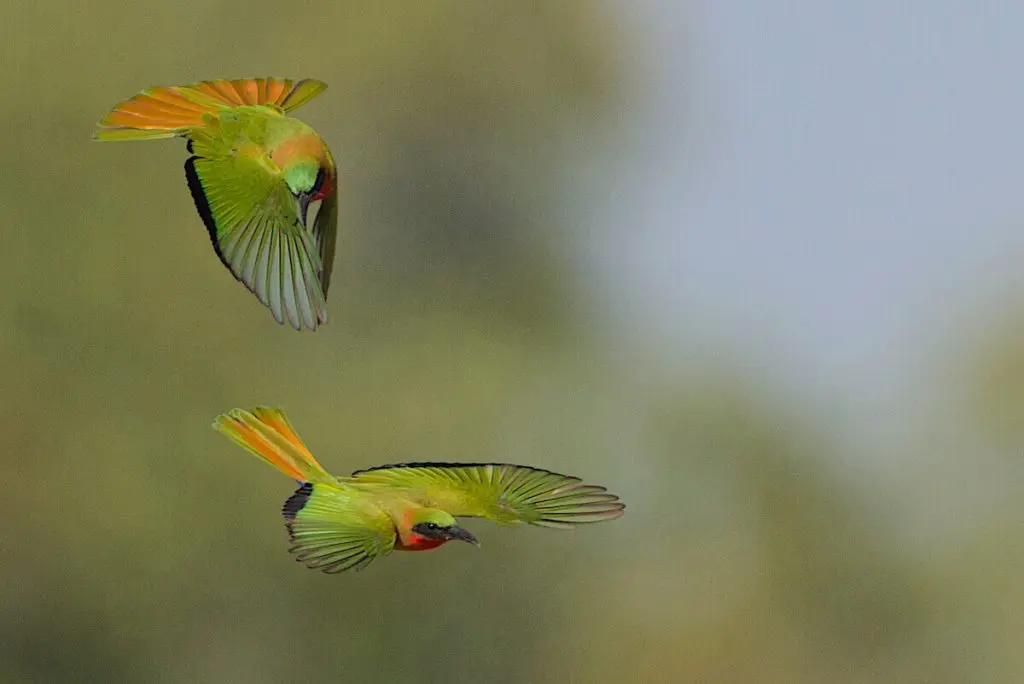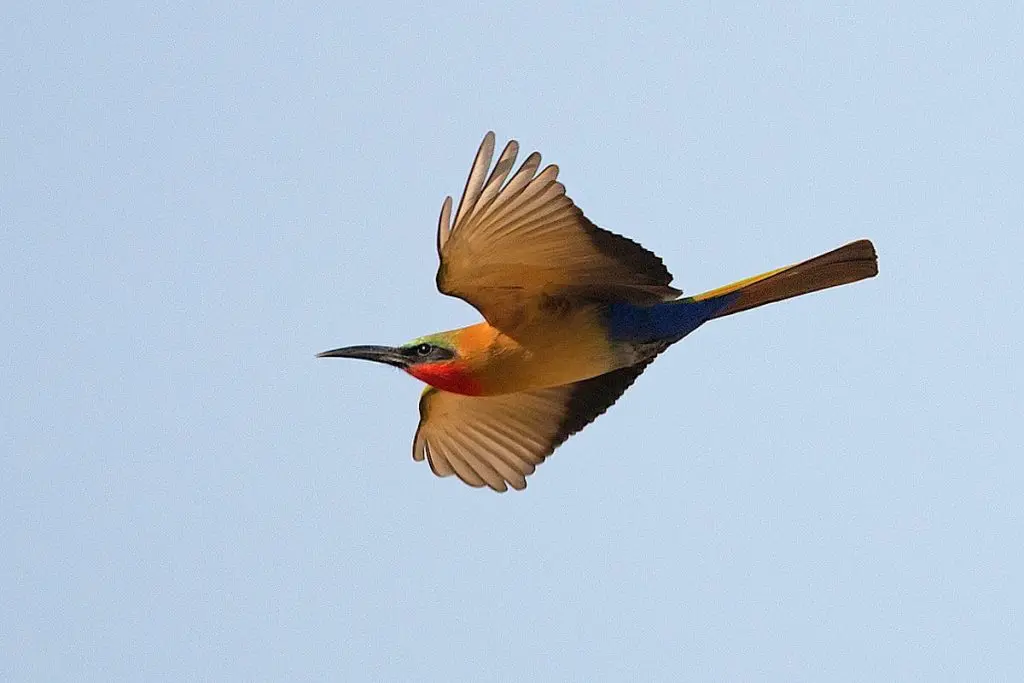The Red-throated Bee-eater much like all other Bee-eaters is a stunning bird.
As we can see from the pictures below, they are very different when viewed in flight from above and below.
Bird information.
Where is the Red-throated Bee-eater found?
The Red-throated Bee-eater has a wide distribution across tropical Africa, its range extending from Senegal and Gambia in the West to Uganda, Southern Sudan, and Ethiopia in the East. Its typical habitat is savannah with scattered trees, farmland with trees, the edges of marshes, bushy pastures and gardens, but the birds are seldom to be found far from the erosion gullies, streams and small rivers, in the banks of which they nest.
In The Gambia, there are large nesting sites at Bansang Quarry.
What does it look like?
The adult Red-throated Bee-eater grows to about 20 to 22 cm (8 to 9 in) in length with a moderately long tail but no streamers. The upperparts are green and the red chin and throat are distinctive, though about 1% of individuals have a yellow throat. The hind neck, breast and underparts are buff, and the under-tail coverts and thighs are bright blue. To the east of the Central African Republic, the birds have blue facial features while to the west these features are green.
What does it feed on?
They feed primarily on bees and other flying insects, such as grasshoppers, flying ants and locusts. It does this by keeping watch for flying insects and then plucking them out of the air using their beaks.
Want to know an interesting Factoid?
They will dig new burrows every year, such that the cliff face becomes riddled over time with hundreds of holes.
How does it sound?
It attracts attention to itself with a simple trill wip or weep which is quite melodious.


